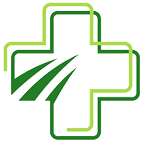When it comes to emergency response, not all CPR training is the same. Understanding the difference between Basic Life Support (BLS) and Advanced CPR training is crucial for selecting the right course for your needs. Premiers Soins CPR training offers both BLS and advanced options, each designed to teach specific life-saving techniques.
1. Basic Life Support (BLS) Training
Basic Life Support is designed for healthcare professionals and those who may need to respond to critical situations, such as lifeguards, nurses, or first responders. BLS focuses on CPR and emergency cardiovascular care for victims of cardiac arrest. It covers essential techniques like chest compressions, rescue breaths, and using an AED. Premiers Soins BLS training teaches participants how to perform these actions in a coordinated manner, ensuring the best possible outcome for the patient.
2. Advanced CPR Training
Advanced CPR goes beyond the basics and is intended for individuals who may need to provide a higher level of care. This training is typically geared toward healthcare providers, such as doctors, paramedics, or advanced practice nurses. Advanced CPR includes additional skills like advanced airway management, administering medications, and using specialized equipment in a hospital or emergency setting. Premiers Soins offers advanced CPR training for those who require a deeper understanding of life-saving procedures.
3. Differences in Complexity and Application
The main difference between BLS and advanced CPR is the level of complexity and the scenarios in which the training is applied. BLS focuses on immediate, pre-hospital care, teaching participants how to maintain vital functions until professional medical help arrives. Advanced CPR, on the other hand, is intended for use in clinical environments where healthcare providers can administer medications and perform more complex interventions.
4. Who Needs Which Training?
BLS is suitable for anyone who may need to respond to emergencies, including laypersons, teachers, and office workers. It’s also a requirement for many healthcare-related certifications. Advanced CPR is specifically for healthcare professionals who are required to perform life-saving interventions in a clinical or emergency setting. Premiers Soins helps individuals choose the appropriate course based on their profession and responsibilities.
5. Certification and Recertification
Both BLS and advanced CPR certifications need to be renewed regularly, usually every two to three years, to ensure that skills remain up-to-date. Premiers Soins offers recertification courses for both types of training, ensuring that participants maintain their qualifications and stay current on the latest techniques.
Conclusion
Understanding the difference between Basic Life Support and Advanced CPR training is essential for selecting the right course. Premiers Soins CPR training provides both BLS and advanced options to meet the needs of healthcare professionals and the general public. By choosing the right level of training, you can be better prepared to respond in emergencies and provide life-saving care when it’s needed most.


